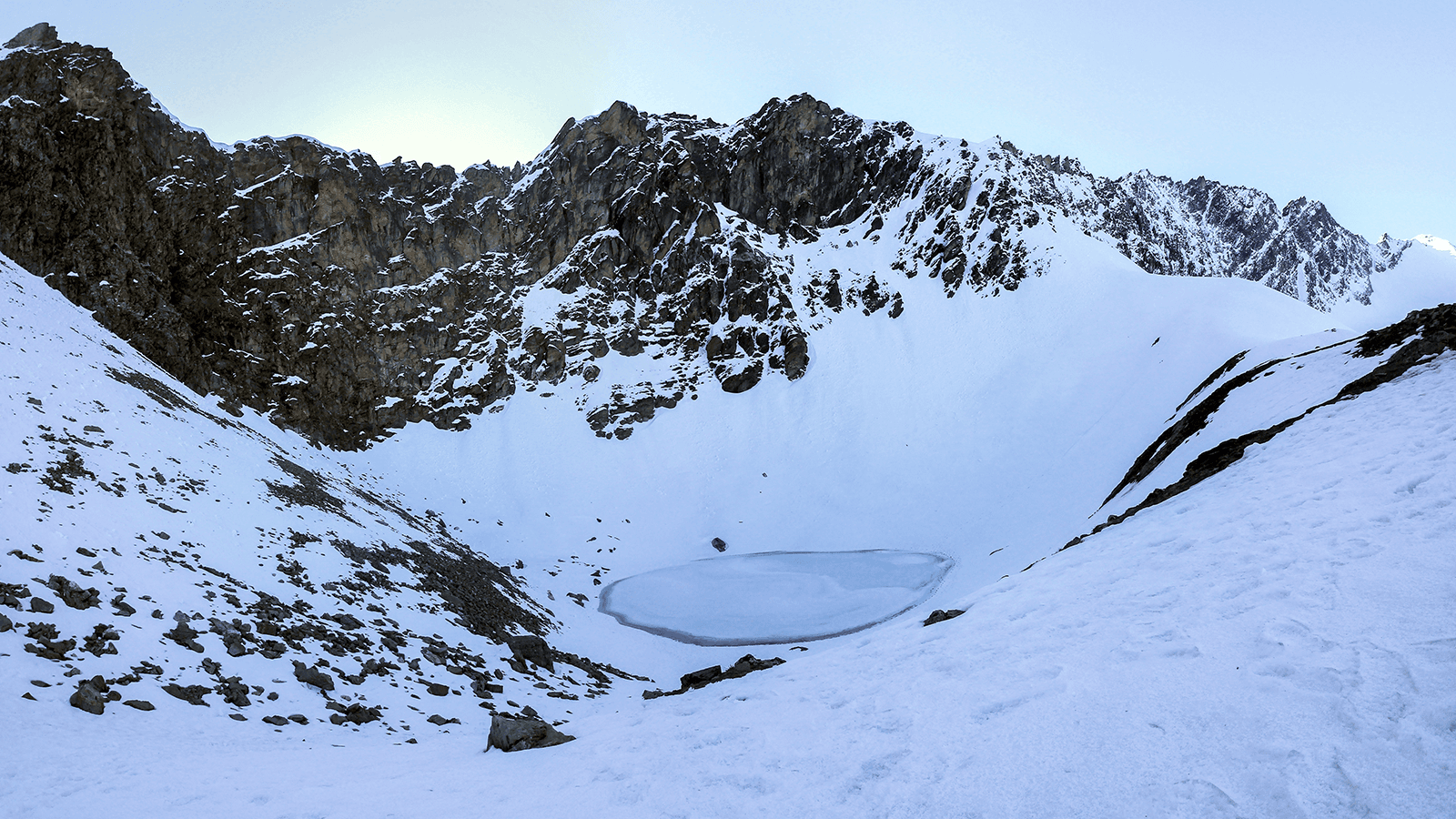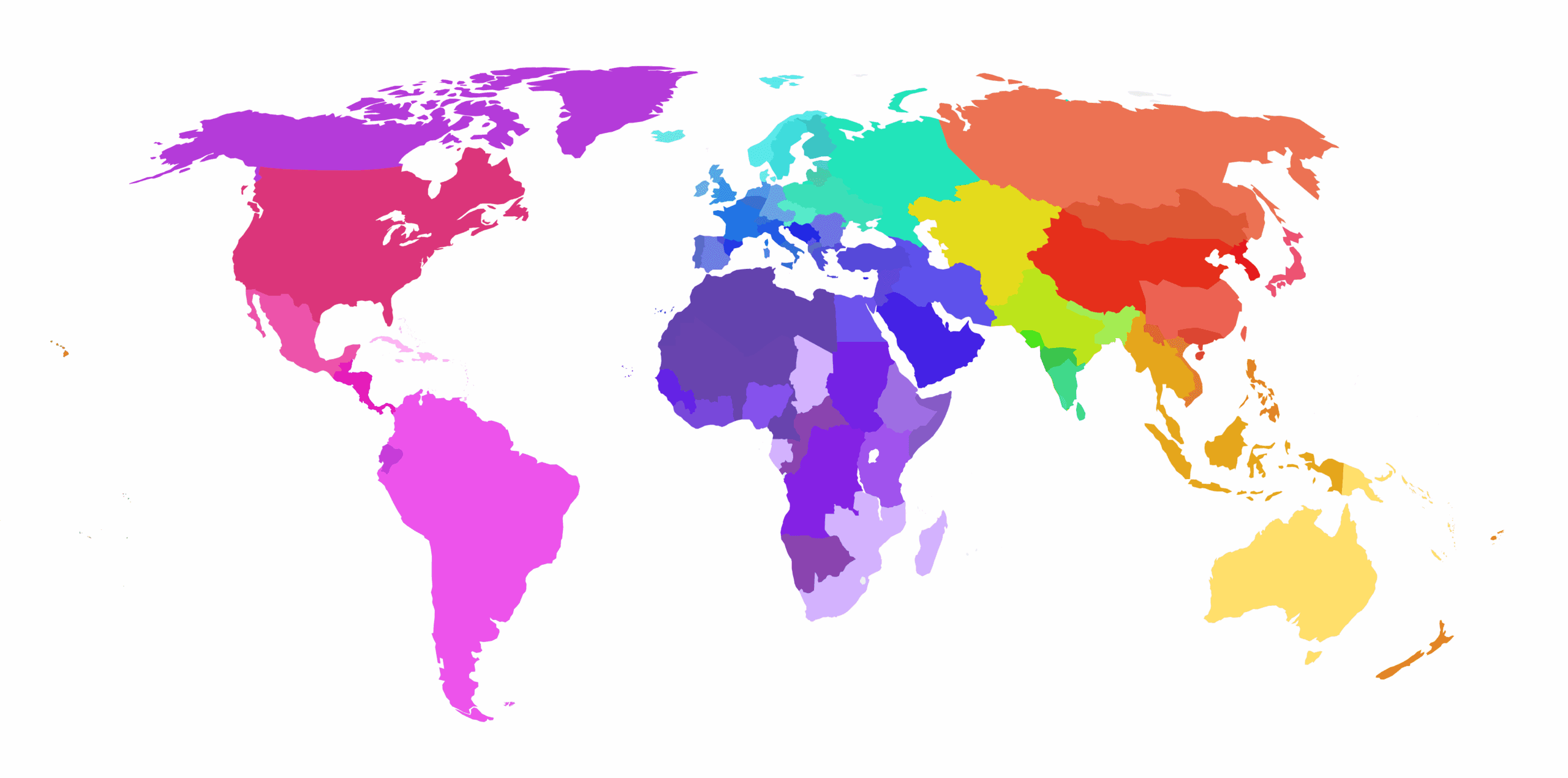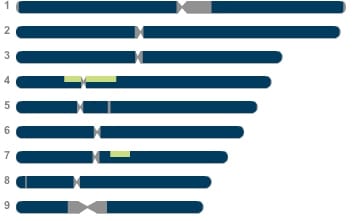
Editor’s Note: This was first published in 2011, but we’re republishing it now after making a few updates.
Just a few thin green segments on my fourth and seventh chromosomes sent me searching.
I wanted to know more about my family history. I pestered my mom with questions about her parents, grandparents, and great-grandparents. I even went digging on my own into birth records, old newspaper clippings, and state archives.
A Glance at African DNA Through History
Eventually, I wandered into family history records on the plains of Nebraska, Iowa, and then the hills of West Virginia.
I wanted to know what those segments represented – or, more accurately – who they represented.
I’m white.
My hair, or at least the hair I once had, is blond. (That’s me on the left with my brother when we were kids.) Our heritage is solidly English, Irish, and German. I named my son after a Gaelic folk hero.
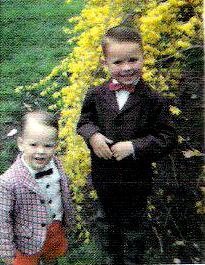
But those thin green segments in my 23andMe Ancestry Painting meant that one of my grandmother’s great-grandmothers, or one of her great-grandfathers, was black.
Hidden History
It’s no secret, or it shouldn’t be, that a majority of African Americans have European ancestry — on average between 20 and 25 percent. It’s one of those vestiges of America’s history of slavery.
“For anyone still naive enough to believe in the myth of racial purity, it is one more corroboration that the social categories of ‘white’ and ‘black’ are and always have been more porous than can be imagined,” wrote Harvard Professor Henry Louis “Skip” Gates Jr. in an article about Michelle Obama’s ancestry.
What Does it Mean to have 1% African Ancestry?
While much has been written about European ancestry among African Americans, what’s less well known is how many Americans, like me, who consider themselves white also have African ancestry.
Researchers at 23andMe looked at the genetic ancestry of about 78,000 customers likely to consider themselves to be entirely of European ancestry. They found that somewhere between 3 percent and 4 percent of those people have “hidden” African ancestry.
The percentage of African ancestry is relatively low, with the majority of individuals having just 0.5 percent to 0.75 percent – which suggests that those people have an African ancestor who lived about six generations, or about 200 years, ago.
African DNA Explained Over 200 Years or Five Generations
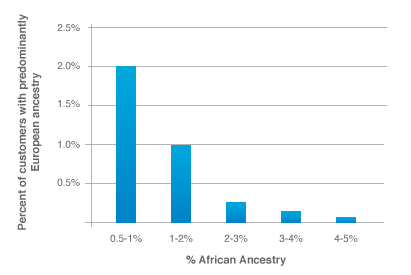
This is by no means meant to represent the percent of African ancestry among those who identify as of European descent across America. It is simply a snapshot of those in our database at this time. Our researchers have also excluded those with more than 5 percent African ancestry with the assumption that it’s more likely that their ancestry is known. That doesn’t mean it is known, just as it doesn’t mean that those of European descent with 5 percent or less African ancestry are unaware of it.
In addition, our database includes customers who are actually European so the percentage of Americans of European descent in our database who have African ancestry may be higher.
But we believe this is the first detailed look at the African ancestry among those who consider themselves white. It begs many questions for possible future study.
Another View of History
For instance, looking at the generational distribution implied by the percentages, most of the mixing occurred 200 years ago or more. We know that the exploitation of slavery included rape and sexual exploitation. In addition, there may have been cases where the relative isolation of people was such that the societal taboos against mixing of the races were more lax.
At the very least, these findings suggest a more complicated picture of race relations at that time.
The news has recast our own picture of who our ancestors were. My sisters and I have 1 percent African ancestry. My mother, a generation closer to the source, has more. It was a surprise for a family that thought we were a mix of Irish, German, and French. The news tells us that we were both descended from an enslaved woman and the person who enslaved her. It makes that awful part of American history much more real for us.
Generational Differences
But the surprise triggered our search to find out about our genealogical history.
Just as 23andMe’s findings offer a new narrative about American social history and race relations, the discovery provided another look at where we came from.
Somewhere in our family’s past, we had a black ancestor who was “absorbed” into white society. That story was hidden until our DNA revealed it.
This ancestor would have lived during the era of slavery. This was at a time and in a place where the “Rule of Hypodescent” held that anyone with any African ancestry was considered “black.” This was more commonly known as the “one-drop rule.”
Beyond what this might say about American history, the finding also comes when people appear more comfortable with mixed ancestry. So, what will this finding mean for other families now?
On a personal note, each generation in had a different reaction to the news of having an African ancestor.
What’s also interesting is that our evidence of African ancestry can’t be seen in the next generation. The generation of my children and my sisters’ children don’t have measurable African ancestry. They are also the generation that seemed most excited by the news. They were also most disappointed that they didn’t have it.
Melugeons
James Larry Vick talked about his own similar discovery through 23andMe that he had African ancestors.
At first, he thought it was a mistake. He has since pieced together the link. He believes it was from his mother’s 2nd great-grandmother, who had come from the Cumberland Gap area of Appalachia. This is the home to a tri-racial population known as “Melungeons.” The Melungeons are of European, African, and Native American ancestry.
“I do not think anyone in our family would have believed we could have an African segment, and none would believe we could have Melungeon ancestry,” Vick said. “I doubt anyone in my family would know what Melungeon is.”
Find out if you have Hidden African Ancestry
Our family’s search of records hasn’t led to quite as detailed of a discovery. However, it’s offered some tantalizing hints linking us to people with the same surname as my mother’s great-grandmother in the same small West Virginia town.
Using 23andMe’s Relative Finder tool, I’ve hunted for people with the same surname. I’ve also looked for those with a family history from that area. This may lead us to new clues. But the journey through this hidden family history has already taught us a lot about ourselves and America’s own hidden history.
So what about you?
With 23andMe, you can learn a lot about your own ancestry. Maybe there will be no big surprises, but often, our histories are not as black and white as we believe. Using 23andMe’s Ancestry Composition feature to explore the mix of your ethnic origins.
You can dig deeper by delving into the Ancestry Timeline to learn when certain ethnicities are “mixed” into your family DNA. (According to this tool, our family’s African ancestors likely lived between 1750 and 1810.) If one or both of your parents have tested, you can see what ancestry came from the paternal versus the maternal side of the family.
Explore Your African DNA and all the origins with 23andMe’s Ancestry Service.
Learn More
You can also find out if your genetics might Increase your risk for any health conditions with 23andMe.



